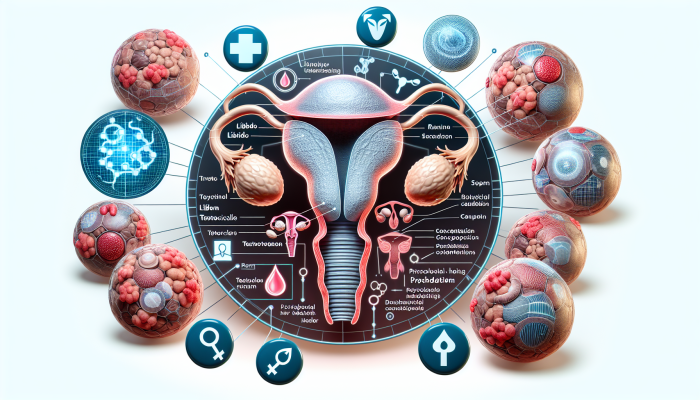Unlocking Your Health Potential: Why Testosterone Testing Standards Matter
Testosterone is a vital element of hormonal health, playing a significant role in the well-being of both men and women. This essential steroid hormone is crucial for a multitude of bodily functions, including muscle growth, libido, bone density, and mental health. Keeping your testosterone levels within the optimal range can dramatically enhance your quality of life, influencing energy levels, mood stability, and cognitive abilities. Therefore, understanding testosterone testing standards is imperative for identifying hormonal imbalances and improving your overall health and vitality.
Essential Insights on How Testosterone Affects Health

The majority of testosterone production occurs within the testicles in men, whereas women produce smaller amounts through their ovaries. While often associated with male traits such as muscle mass and facial hair, testosterone is crucial for a range of bodily functions in both sexes. Fluctuations in testosterone levels can significantly influence sexual drive, sperm production, and cognitive abilities like focus and concentration. Low testosterone can contribute to various health challenges, including depression, chronic fatigue, and diminished sexual function, highlighting the importance of balanced hormone levels.
Furthermore, testosterone has a profound impact on psychological well-being. Research suggests that adequate testosterone levels support emotional stability and resilience against stressors. This further underscores the necessity of monitoring your testosterone levels, particularly if you experience notable changes in emotional or physical health.
Exploring the Development and Significance of Testosterone Testing Standards
The testosterone testing standards are formulated based on comprehensive clinical studies involving healthy participants across diverse demographics. These studies account for various factors, such as age, gender, and the precise timing of the test. It’s essential to note that testosterone levels naturally fluctuate throughout the day, typically peaking in the early morning hours. As a result, laboratories tailor their standards to accommodate these variations, ensuring accurate assessments of hormonal health.
It’s crucial to understand that reference ranges may differ between laboratories due to variations in testing techniques and the specific populations they study. Consequently, a result deemed “normal” in one laboratory might not have the same interpretation in another. This reality emphasizes the importance of consulting with a healthcare professional to accurately interpret your results, taking into account your individual health circumstances and medical history.
Examining the Variability of Testosterone Testing Standards Across Different Laboratories
Discrepancies in testosterone testing standards among laboratories can stem from several factors. Each laboratory may employ different testing methodologies that vary in accuracy and sensitivity. For instance, some may use immunoassays, while others may utilize sophisticated techniques such as liquid chromatography, resulting in variations in reported outcomes.
Moreover, the reference populations used to establish these standards can significantly influence the resulting values. If a laboratory primarily tests individuals from a specific age bracket or ethnic group, its norms may not accurately reflect the broader population. Therefore, obtaining test results from a reputable laboratory and consulting with a healthcare professional is essential for understanding the implications of your results in the context of your medical history.
Essential Guidelines for Interpreting Your Testosterone Testing Results

Gaining a solid understanding of how to interpret your testosterone test results may initially seem overwhelming; however, it becomes manageable with a clear grasp of the established standards and their significance. Typically, testosterone levels are measured in nanograms per deciliter (ng/dL) and can vary significantly based on several factors, including age and sex.
A Comprehensive Guide to Analyzing Your Testosterone Test Results
The first step in interpreting your testosterone test results is to compare them against the testosterone testing standards. While normal testosterone levels can fluctuate, men generally fall within the 300 to 1,000 ng/dL range, whereas women typically have levels between 15 to 70 ng/dL. If your results fall outside these established ranges, it may be necessary to delve deeper into the underlying causes of these anomalies.
Additionally, it’s crucial to assess results within the broader context of your overall health. Testosterone levels that may seem low for one person could be entirely normal for another, depending on factors such as age, overall health, and individual circumstances. Partnering with a healthcare provider can help you interpret your results thoroughly and determine whether further evaluations or interventions are warranted.
Understanding the Consequences of Low Testosterone Levels on Health
Low testosterone levels, clinically termed hypogonadism, can lead to various significant health complications. Symptoms may vary widely but often include reduced libido, chronic fatigue, decreased muscle mass, and mood disturbances. If you are experiencing these symptoms, it is prudent to undergo a testosterone test to determine if your levels fall below the normal range.
The causes of low testosterone can be multifactorial, ranging from underlying medical conditions to lifestyle choices. Health issues such as diabetes, obesity, and disorders affecting the pituitary gland can adversely impact testosterone synthesis. Additionally, external factors like exposure to endocrine disruptors or harmful chemicals may also contribute to hormonal imbalances. A thorough medical evaluation is essential for identifying the root cause and developing an effective treatment plan.
Health Risks Associated with Elevated Testosterone Levels

Conversely, elevated testosterone levels can also pose significant health risks. High testosterone levels may be associated with medical conditions such as testicular tumors or the misuse of anabolic steroids. Symptoms of excess testosterone can include acne, increased blood pressure, and mood changes, including heightened irritability and aggression.
It is essential to avoid rushing to conclusions based solely on high test results. Consulting with a healthcare professional is critical for evaluating these findings and considering additional diagnostic testing to uncover any underlying issues. Furthermore, discussing the potential risks associated with elevated testosterone levels, including cardiovascular complications and other adverse effects, is equally crucial.
Comprehensive Factors That Affect Testosterone Levels
The levels of testosterone are dynamic and can be influenced by a variety of factors. Understanding these influences empowers you to make informed decisions about your hormonal health and overall wellness.
The Impact of Aging on Testosterone Levels
Age serves as a significant factor affecting testosterone testing standards. Research indicates that testosterone levels in men experience a gradual decline starting around the age of 30. This gradual decrease can have profound implications for both physical and mental health over time.
For women, although testosterone levels are inherently lower, they too can decrease with age, especially after menopause. This reduction can lead to symptoms such as fatigue, decreased sexual desire, and mood fluctuations. Therefore, it is vital for individuals of all genders to monitor their testosterone levels as they age and seek medical guidance if they notice signs of hypogonadism.
The Role of Lifestyle Choices in Modulating Testosterone Levels
Lifestyle choices have a substantial impact on maintaining optimal testosterone levels. Embracing healthy lifestyle practices, such as a nutritious diet, regular physical activity, and sufficient sleep, plays a crucial role in sustaining appropriate hormonal levels. Research has shown that engaging in physical activity, particularly resistance training, can effectively increase testosterone production.
On the flip side, lifestyle risk factors, including obesity, sedentary behavior, and chronic stress, can disrupt hormonal balance. Elevated stress levels, in particular, can raise cortisol levels, which may inhibit testosterone synthesis. By implementing stress management techniques such as meditation or yoga, along with maintaining an active lifestyle, you can effectively support your hormonal health.
The Effects of Medications and Supplements on Testosterone Levels
Certain medications can significantly influence testosterone levels. Drugs like corticosteroids, opioids, and some antidepressants may lead to reduced testosterone production. If you are currently on medication and have concerns about your testosterone levels, it is advisable to discuss these concerns with your healthcare provider.
Conversely, some dietary supplements claim to enhance testosterone levels, including zinc and vitamin D. While some studies suggest these supplements may benefit individuals with deficiencies, it is crucial to consult a healthcare professional before starting any supplementation regime. Often, a balanced approach that emphasizes healthy dietary choices and an active lifestyle proves to be the most effective method for maintaining optimal hormonal levels.
Recognizing Symptoms and Diagnostic Methods for Abnormal Testosterone Levels
Identifying the symptoms associated with abnormal testosterone levels is essential for early detection and timely intervention. This process typically involves a combination of physical examinations and laboratory assessments.
Common Symptoms of Low Testosterone Levels to Watch For
Symptoms linked to low testosterone levels can vary among individuals, but several common signs may indicate a hormonal imbalance. Persistent fatigue is one of the most frequently reported symptoms. If you observe an unusual decrease in energy levels that cannot be attributed to other factors, it may signal low testosterone.
A decline in sexual desire is another critical indicator. Men may find it challenging to achieve or maintain an erection, while women may notice a reduction in interest in sexual activities. Additionally, loss of muscle mass, increased body fat, and mood fluctuations, including anxiety or depression, can also be associated with low testosterone levels.
When to Consult a Healthcare Professional for Testosterone Testing
If you experience persistent symptoms or have specific concerns regarding your testosterone levels, it’s advisable to seek guidance from a healthcare professional. Early evaluation can help identify potential underlying health conditions and establish a personalized action plan.
For men over 40 or women approaching menopause, discussing testosterone testing with your physician may be particularly prudent, even in the absence of noticeable symptoms. Regular screenings can facilitate effective monitoring of your testosterone levels and support informed health decisions.
The Comprehensive Diagnostic Process for Evaluating Testosterone Levels
The diagnostic process for assessing testosterone levels typically begins with a medical consultation, during which your symptoms and medical history are thoroughly examined. If a hormonal imbalance is suspected, your doctor may recommend a blood test to measure your testosterone levels.
Testing is often conducted in the morning when testosterone levels are highest to ensure the most reliable results. If abnormal results are observed, further testing may be needed to investigate the underlying cause, which could involve assessments of pituitary gland function or additional hormonal evaluations. An accurate diagnosis is crucial for formulating an effective treatment plan tailored to your specific needs.
Exploring Treatment Options and Therapies for Abnormal Testosterone Levels
Once abnormal testosterone levels are identified, various treatment options may be available. The selection of treatment often depends on the underlying cause and personal preferences.
Proven Treatment Strategies for Low Testosterone Levels
Options for addressing low testosterone levels may include testosterone replacement therapy (TRT), which aims to restore normal hormonal levels. TRT can be administered through multiple methods, such as injections, gels, or transdermal patches. This approach has demonstrated efficacy in alleviating symptoms associated with hypogonadism, including fatigue, reduced libido, and muscle weakness.
However, it is essential to discuss the potential risks and benefits of TRT with a healthcare provider. While many patients report significant symptom relief, there are also potential risks involved, including cardiovascular issues and various side effects. Regular monitoring of hormonal levels is often necessary to ensure that the treatment remains both effective and safe.
Natural Methods to Boost Testosterone Levels
For those who prefer to avoid hormonal therapies, several natural strategies can help increase testosterone levels. Maintaining a healthy lifestyle characterized by a well-balanced diet is crucial. Foods rich in zinc, vitamin D, and omega-3 fatty acids are particularly beneficial for testosterone production.
Moreover, engaging in regular physical exercise, especially resistance training, serves as an excellent way to stimulate testosterone production. Additionally, incorporating stress management techniques such as meditation, yoga, or leisure activities can help lower cortisol levels, thus promoting optimal hormonal balance.
Evaluating the Risks and Benefits of Testosterone Replacement Therapy
Testosterone replacement therapy can offer numerous benefits, including improved libido, enhanced mood, and increased muscle mass. However, this therapy also comes with potential risks, such as a heightened risk of cardiovascular disease, sleep apnea, and prostate-related complications.
Thus, it is essential to carefully weigh the pros and cons of TRT. A thorough consultation with a healthcare professional is necessary to determine whether this treatment option is appropriate for your specific situation. Regular follow-ups are also crucial to monitor the effects of treatment and make any necessary adjustments.
The Intricate Relationship Between Testosterone Levels and Overall Health
Testosterone levels significantly influence various aspects of health, including mental wellness, bone health, and cardiovascular function. Understanding these connections enables you to manage your health proactively and effectively.
The Influence of Testosterone Levels on Mental Health
Research has demonstrated that testosterone levels have a substantial impact on mental health. Low testosterone levels are frequently correlated with mood disorders, such as depression and anxiety. Individuals who maintain adequate testosterone levels often exhibit enhanced emotional resilience and an improved overall quality of life.
It is important to recognize that treating hypogonadism can also yield positive repercussions on mental health. Patients frequently report enhanced mood and reduced depressive symptoms after normalizing their hormonal levels. This underscores the necessity of monitoring testosterone levels, particularly if you are facing mental health challenges.
The Role of Testosterone in Supporting Bone Health
Testosterone plays a critical role in maintaining bone health, as it contributes to preserving bone density and preventing osteoporosis. Adequate testosterone levels help sustain bone mass and decrease the risk of fractures. This is especially pertinent for older adults, as declines in testosterone levels can lead to increased bone fragility.
Studies suggest that testosterone replacement therapy may positively influence bone density in both men and women experiencing hypogonadism. Therefore, monitoring testosterone levels and considering appropriate treatment options are vital for sustaining good bone health.
Understanding the Connection Between Testosterone and Cardiovascular Health
The relationship between testosterone levels and cardiovascular health is intricate. Properly balanced testosterone levels contribute to improved heart health by supporting lipid metabolism and enhancing vascular function. However, elevated testosterone levels, often associated with anabolic steroid use, can increase the risk of cardiovascular diseases.
Achieving a healthy hormonal balance is critical. Regular monitoring of your testosterone levels and consulting with a healthcare professional can aid in navigating these complex issues and maintaining optimal cardiovascular health.
Proactive Strategies for Testing and Monitoring Testosterone Levels
Preparing for a testosterone test and actively monitoring your testosterone levels is essential for maintaining optimal hormonal health. Here are some valuable tips to guide you through this process.
Effective Preparation for a Testosterone Test
Proper preparation for a testosterone test is crucial for ensuring accurate results. It is advisable to refrain from intense physical activity, alcohol consumption, and certain medications, such as corticosteroids, for at least 24 hours prior to the test. Testing is typically performed in the morning when testosterone levels are at their highest, providing more reliable outcomes.
Moreover, discussing any concerns or queries with your physician before the test is vital. Adequate preparation can significantly influence the accuracy of your results and enhance your understanding of your hormonal health.
Recommended Testing Frequency for Monitoring Testosterone Levels
The frequency of testosterone testing often depends on individual symptoms and medical guidelines. For men over 40, annual testing may be advisable, particularly if there are concerns regarding low testosterone levels. For those receiving treatment or exhibiting symptoms, more frequent testing may be necessary to monitor testosterone levels and adjust treatments as needed.
Maintaining open communication with your healthcare provider is crucial to determining the most suitable testing frequency based on your personal health circumstances.
The Importance of Ongoing Monitoring of Testosterone Levels
Continuous monitoring of testosterone levels is essential for tracking the effectiveness of treatments and detecting any changes in your hormonal health. This is especially critical for individuals undergoing testosterone replacement therapy, as adjustments may be required over time.
By diligently monitoring your testosterone levels, you can collaborate with your healthcare professional to optimize your treatment and ensure a healthy hormonal balance. This proactive approach can significantly enhance your overall well-being and help prevent potential health complications in the future.
Common Questions Regarding Testosterone Testing Standards
Do testosterone levels change throughout the day?
Yes, testosterone levels naturally fluctuate throughout the day, typically peaking in the early morning hours.
What symptoms suggest low testosterone levels?
Common symptoms include persistent fatigue, decreased libido, mood disturbances, and loss of muscle mass.
How do testosterone levels affect mental health?
Low testosterone levels can contribute to mental health challenges, including depression and anxiety.
When should I consult a physician regarding testosterone testing?
Consult a healthcare provider if you experience ongoing symptoms or have concerns about your testosterone levels.
What treatment options are available for low testosterone levels?
Available options include testosterone replacement therapy, lifestyle changes, and natural therapies.
Is testosterone replacement therapy safe?
While beneficial for many patients, testosterone replacement therapy carries potential risks, including cardiovascular complications.
Can supplements help improve testosterone levels?
Some supplements may assist, but it’s important to consult a healthcare professional before starting any supplementation regimen.
What is the normal testosterone range for men?
Normal testosterone levels in men typically fall between 300 and 1,000 ng/dL.
Do women need testosterone testing?
Yes, women can also benefit from testosterone testing, especially if they experience symptoms of hormonal imbalance.
What is the recommended frequency for testosterone testing?
The testing frequency varies based on individual symptoms and medical history, but annual testing may be appropriate for men over 40.
Connect with us on Facebook!
This Article Was First Found On https://bloodtest.co.uk
The Article: Testosterone Testing Standards Explained: A Comprehensive Guide appeared first on: https://ezbloodtest.com
The Article Testosterone Testing Standards: Your Essential Guide Explained Was Found On https://limitsofstrategy.com

